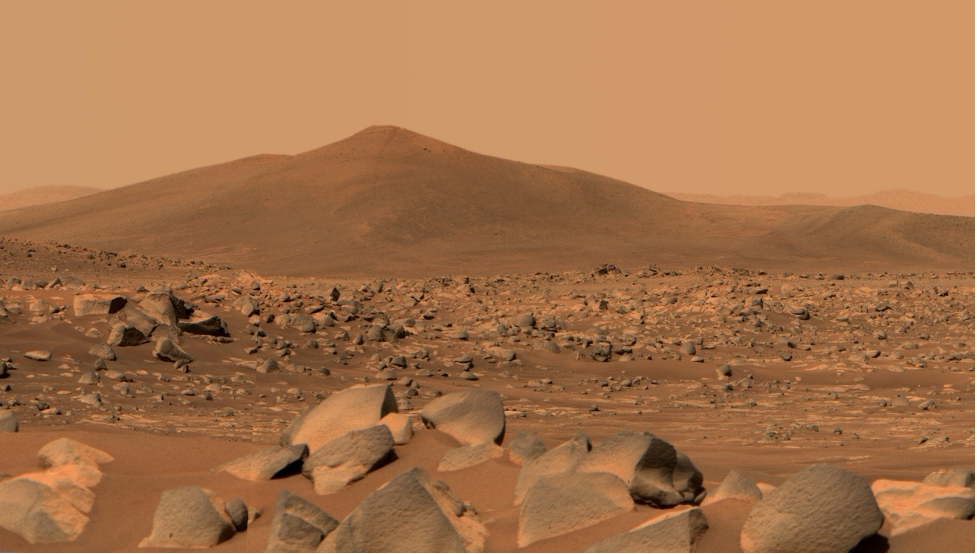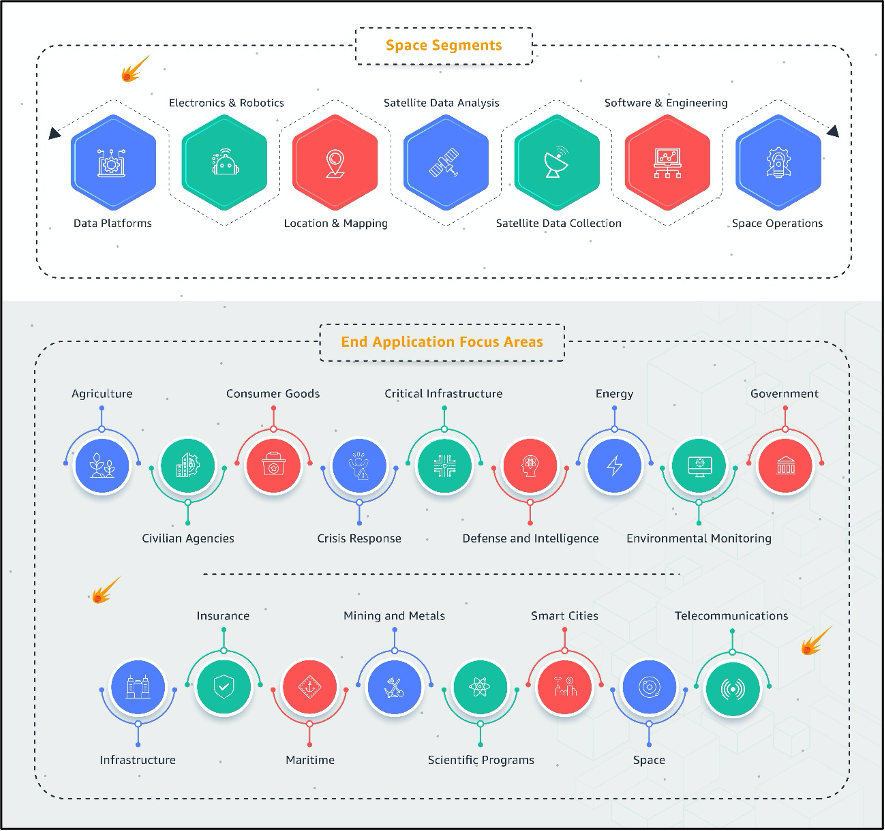There was a time not so long ago that space was known as the final frontier—the exclusive domain of governments and a small handful of aerospace companies who could muster the technology and resources to depart the Earth’s atmosphere. Today, however—similar to what we’ve observed with technologies like artificial intelligence and quantum computing that were once accessible only to universities and research labs—space technologies are being democratized thanks in part to the cloud. I closed out last year with a prediction that space will be the area where we see some of the greatest advancements when it comes to novel application of cloud capabilities. Now, only six months later, a new crop of space pioneers are preparing to supercharge their efforts with cloud technology. Within the emerging commercial space industry, where it’s feasible for even small startups to make a big impact by introducing innovative new space technologies, the cloud will be critical to accelerating experimentation, expanding automation, and delivering deeper insights.
Getting to this point of expanded commercial activity was no accident. In recent decades, governments have made a concerted effort to create the conditions for a robust private sector space presence. Not only did they invest in the research and development of foundational technologies, they also supported these space ventures by purchasing their goods and services. Just as important, in my opinion, they’ve brought together stakeholders from across industry and the public sector to talk through potential issues, shape voluntary standards, and define best practices in the hope that space will be a sustainable and usable environment for everyone—now and in the future. Thanks to these efforts, industry has the opportunity to continue their rapid growth and increase the quality of life for everyone by delivering more reliable and cost-effective use of space.
It’s my belief that this next era of space innovation will have a drastic and positive impact on quality of life by helping us address several of the hardest human problems. Consider how the profusion of small satellites in orbit means researchers are beginning to benefit from 24/7 streams of exquisitely detailed information about our planet, regardless of weather conditions. They can use this to study our climate, improve agricultural yields, preserve wildlife, or safeguard water supplies. Regardless of the application, democratizing access to high-resolution satellite data paves the way for a deeper understanding of our planet. Pretty amazing stuff, and that’s just one part of the unfolding space story.

(Image: NASA’s Perseverance Mars rover used its dual-camera Mastcam-Z imager to capture this image of “Santa Cruz,” a hill about 1.5 miles (2.5 kilometers) away from the rover, on April 29, 2021. Source: NASA/JPL-Caltech/ASU/MSSS)
Leveraging Cloud to Bolster Public and Private Space Missions
Cloud companies like AWS have a particular role to play in supporting this type of innovation. For one thing, we can give new players in the market the scale, agility, and global reach they need to power solutions, but we can also help established players streamline operations. In the case of satellites and space-based robots, that means providing tools to rapidly downlink, process, share, and study vast data sets. This is not something I get to say every day, but let’s look to Mars for examples from two successful missions in February. On the surface of the Red Planet, AWS is processing and hosting the science and engineering data collected by NASA’s Mars Perseverance rover. As a result, NASA JPL is able to process data from Mars, on Earth, faster than ever before. Meanwhile, the Mohammed Bin Rashid Space Centre’s Hope Probe mission is relying on AWS advanced technologies to process and analyze vast amounts of data and imagery that are helping researchers study the layers of the Martian atmosphere. And what can that tell us? For one thing, it can give scientists a better understanding of the causes of drastic climate changes on the planet.
The newer space industry players face similar challenges to their public sector counterparts. As we know, data is at the center of everything, and the best insights are delivered in near-real time. To get there, commercial satellite operators are adopting technologies like machine learning that help automate enrichment and analysis of vast amounts of data. AWS customer Fireball International is demonstrating just how critical speed is by using satellite imagery to protect communities from wildfires. They’re processing more than 2.5 million images a day on AWS to identify the outbreak of a fire within three minutes of ignition and automatically notify first responders to help save lives.

Laying the Groundwork for Future Space Collaboration
The tremendous work already underway is just a preview of what’s to come as more and more companies begin to develop applications and services, especially in the startup space. We launched our AWS Space Accelerator in March to catalyze additional innovation and support some of the most innovative startups that are helping shape the future of aerospace. We decided to collaborate with Seraphim in this effort as they are one of the world’s leading investment groups focused exclusively on the space industry.
Today, I’m thrilled to announce the 10 startups we selected to take part in the first cohort of the accelerator: Cognitive Space, D-Orbit, Descartes Labs, Edgybees, Hawkeye 360, LeoLabs, Lunar Outpost, Orbital Sidekick, Satellite VU, and Ursa Space. These companies from the United States and Europe cover a wide range of space capabilities with impact here on Earth today, as well as on humanity’s approach to working and living in space in the future. We selected them out of more than 190 proposals from 44 countries—an inspiring metric of the breadth of ideas that are percolating around the world.
Over the next four weeks, we’ll immerse these companies in the cloud with hands-on technical training in capabilities like machine learning and high performance computing. We’ll provide them each with up to $100,000 in AWS Activate credit to experiment with how they can transform their data and operations in the cloud. Further, to help specialize, they’ll have the chance dive deeper during workshops into services such as AWS Robomaker for robot developers, AWS IoT Greengrass for managing IoT applications, and AWS Ground Station for communicating with satellites and managing satellite data. We think these services are key to powering the commercial space industry. On the business side of the house, we’ll be providing them with mentorship from subject matter experts, along with business development and investment guidance. As we like to say at Amazon, “speed matters,” and our goal is to have these startups come out on the other side of their brief four weeks prepared to make an even bigger mark on the space industry.

Building Blocks of a Commercial Space Industry
While space is (potentially) infinite, our first cohort members are tackling an exciting, but fortunately more bounded range of challenges and opportunities. They’ve set out to expand what humanity can achieve while physically in space, as well as how we apply space-derived data back here on Earth.
Space, of course, is a uniquely complex place to operate. There is—for now, at least—no rapid access to resupply, no ability to quickly repair a broken part, and slow, low-bandwidth communication. As a result, space operations must be inherently self-sufficient and extract the maximum value out of every milligram of equipment and resources we send up. Lunar Outpost is preparing to take on these challenges with technologically sustainable solutions for space exploration, such as autonomous robots, that aren’t constrained by the high latency of remote control from Earth or the need for frequent maintenance.
The magical appeal of space also doesn’t mitigate the burden of more mundane logistical concerns. Operators must manage their satellites once they’re in orbit and address concerns such as positioning, diagnostics, communication, and hardware integrity. As space becomes more active, advanced cloud technologies can help satellite operators achieve greater satellite command and control and better situational awareness of other objects in orbit. Cognitive Space, D-Orbit, and LeoLabs are each addressing aspects of these challenges with capabilities like precisely tracking space debris in Low Earth Orbit, optimizing in-orbit satellite operations, and managing small satellite constellations.
Back on the ground, companies need to rapidly process, enhance, and share their data from space so that end users can extract the most value from it and apply it to decision-making. Think, though, about how much data is generated by the emerging capability for persistent, real-time awareness on a planetary scale. It’s easy to see why operating in the cloud is so vital, and we aim to help Descartes Labs, Edgybees, Hawkeye 360, Orbital Sidekick, Satellite VU, and Ursa Space enhance their support to an important range of needs with their space-derived data and insights. These companies are innovating for missions such as bolstering environmental and sustainability efforts, as well as agricultural productivity, disaster response, humanitarian assistance, and international security. Already, they’re engaged in helping companies act on their net-zero carbon commitments with transparency by tracking volumes of above-ground biomass or measuring thermal emissions from man-made structures. They’re helping farmers optimize use of water and pesticides. They’re giving firefighters near-instant awareness of new blazes and equipping humanitarian first responders with life-saving context by adding precise geo-registration data and applying augmented reality to imagery.
Through their relationship with AWS, we aim to give the entire cohort opportunities to accelerate their growth and broaden their impact.

A Brighter Future from the Darkness of Space
It’s clear to me that opportunities are ripe to expand what’s possible in space with capabilities such as remote satellite command and control, autonomous capabilities on-orbit, and better solutions for data transfer. I view space start-ups as essential to delivering on that potential, and I’m excited to watch our first cohort continue to experiment and grow in the cloud. Furthermore, emerging best practices from the commercial space industry relating to security, trust, and inclusion will also be essential to realizing our most positive visions of space. We’ll need to actively channel how space capabilities are deployed to support shared economic growth, improved practices for how we make use of resources, and overall human wellbeing. My hope is that by leveraging resources like the AWS Space Accelerator we can promote greater collaboration to guide this innovation.
